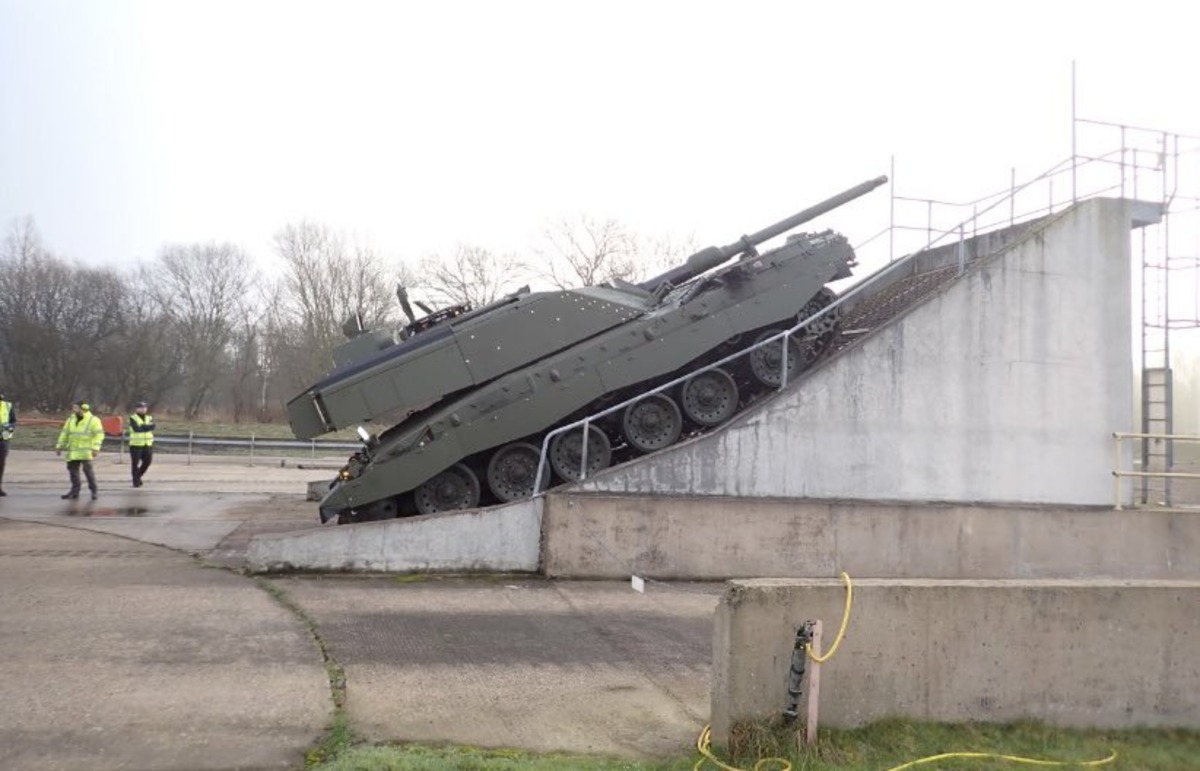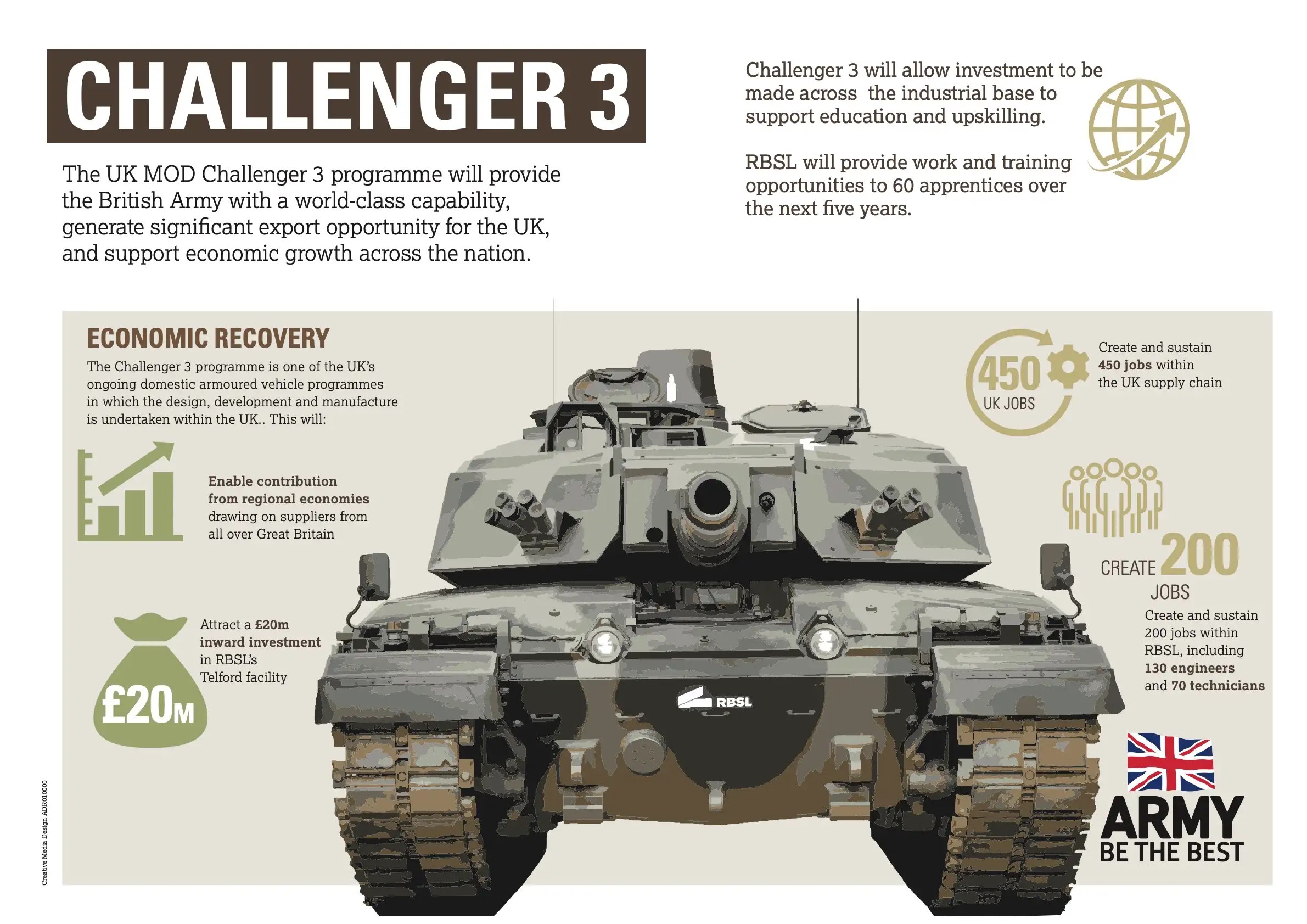Britain’s new Challenger 3 tanks – produced in a joint venture between Germany’s Rheinmetall and the UK’s BAE Systems – promise to be a potent addition to the British Army and a major contributor to NATO’s deterrence.
Rheinmetall BAE Systems Land (RBSL), a joint venture between Germany’s Rheinmetall and the UK’s BAE Systems, has announced deploying the first pre-production Challenger 3 tank to Germany for trials.
This marks a crucial milestone in the ongoing program to enhance the British Army’s armored capabilities.
The announcement, made via RBSL’s official X (formerly Twitter) account on January 19, revealed that the Challenger 3 prototype has been dispatched to undergo rigorous testing under operational conditions.
Images of the tank were also shared, providing enthusiasts and stakeholders a glimpse of the cutting-edge technology being developed. The Challenger 3 prototypes will be subjected to various tests to validate their performance and durability during the trials.
The feedback gathered will be instrumental in refining the design before the production of an additional 140 tanks slated for delivery to the British Army, according to the Rheinmetall BAE Systems Land (RBSL).
This deployment follows the unveiling of the Challenger 3 prototype at the prestigious International Armoured Vehicles conference in London on February 15, 2024.
We are delighted to announce that the first pre-production #Challenger3 has been deployed to #Germany for trials – yet another important milestone for the programme! @BritishArmy @DefenceES pic.twitter.com/RygtTJfiaw
— RBSL (@RH_BAES_Land) February 19, 2024
Speaking at the conference, Nick Berchem, Deputy Project Manager of Challenger 3 at RBSL, highlighted the tank’s design focus on crew safety, operational effectiveness, and comfort. He expressed confidence that the Challenger 3 would be a potent and popular addition to the British Army’s inventory.
Challenger 3 is expected to play a central role in the Army’s Armoured Brigade Combat Teams, aligning with other advanced platforms like Ajax and Boxer under the Future Soldier initiative.
Colonel Will Waugh, Senior Responsible Owner of the Army’s Armour (Main Battle Tank) Programme, highlighted the importance of credible warfighting capabilities, especially in light of recent events in Ukraine, “Events in Ukraine have underscored the need for credible warfighting capabilities. The Army’s Armoured Brigade Combat Teams, with Challenger 3 at their center, are key to the UK’s contribution to NATO’s deterrence.”
Reports suggest that the trials are scheduled to span a total of 18 months, with testing conducted at both UK and German sites, culminating in a systems qualification review next year. The development plan includes the development of eight prototypes.
The British Army is set to receive its first deliveries in 2027, and full operational capability is expected to be achieved by 2030.
‘The Best Tank In NATO’
According to the manufacturer, the Challenger 3 program is poised to deliver “the best tank in NATO,” featuring a network-enabled, digital main battle tank designed to provide soldiers with a transformative capability, ensuring a 21st-century deterrence up to its planned out-of-service date in 2040.
The standout feature of the Challenger 3 is its newly designed turret armed with Rheinmetall’s 120mm L55A1 smoothbore cannon, replacing the L30A1 rifled gun of the current Challenger 2.

The upgraded weapon boasts a greater muzzle velocity, resulting in improved penetration and, in some instances, extended range.
The tank’s single-piece ammunition, in contrast to the two-piece rounds used in the Challenger 2, allows for the use of a wide range of NATO-standard smoothbore ammunition, including Rheinmetall’s DM63 and DM73 armor-piercing fin-stabilized discarding sabot (APFSDS) rounds. With their long dart penetrator, these rounds utilize kinetic energy to penetrate enemy armor effectively.
The tank is outfitted with an optical/targeting package akin to the British Army’s Ajax-tracked infantry fighting vehicles, featuring the Thales Orion and Day/Night Gunner And Panoramic Sight (DNGS T3).
This standardized system is anticipated to streamline logistical operations and reduce costs. Also, the sensors are integrated into an open-architecture framework, facilitating rapid and cost-effective adaptation to emerging technologies.

The Challenger 3 has been equipped with new modular armor (nMA) to bolster its protection. This system employs a modular design, allowing specific segments of the armor to be swiftly removed and replaced as needed.
Additionally, there is provision for an active protection system (APS), a feature increasingly vital in modern tanks, particularly for improved defense against anti-tank-guided missiles and rocket-propelled grenades. This system could also potentially counter lower-end drones in the future.
Similar to the nMA package, the APS will not be permanently installed on all Challenger 3 tanks. Instead, it will be fitted as required.
The United Kingdom has opted for the Israeli-made Trophy APS for the Challenger 3, which utilizes radar to detect incoming projectiles and subsequently fires intercepting projectiles at them.
- Contact the author at ashishmichel(at)gmail.com
- Follow EurAsian Times on Google News




